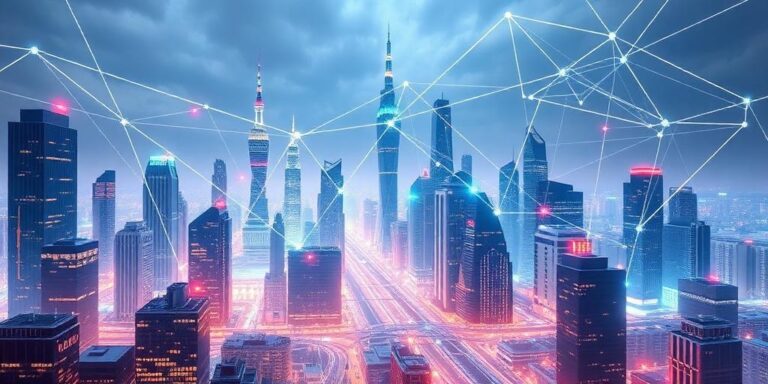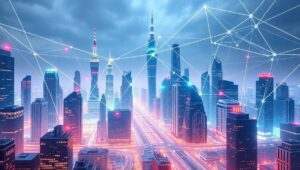How IoT Will Transform Daily Life by 2030
The Internet of Things (IoT) is rapidly evolving, and by 2030, its impact on daily life will be profound. IoT refers to the network of physical objects—devices, vehicles, buildings, and other items—embedded with sensors, software, and network connectivity that enables these objects to collect and exchange data. This interconnectedness promises to revolutionize various aspects of how we live, work, and interact with our environment.
Smart Homes and Urban Living
By 2030, smart homes will be ubiquitous, offering unprecedented levels of convenience and efficiency. Imagine waking up to a house that has automatically adjusted the temperature, lighting, and air quality based on your preferences and real-time weather conditions. Your refrigerator will track its contents and automatically order groceries when supplies are low. Security systems will be more sophisticated, using AI to identify and respond to potential threats, providing homeowners with peace of mind.
In urban environments, IoT will drive the development of smart cities. Streetlights will adjust their brightness based on pedestrian and vehicle traffic, reducing energy consumption. Traffic management systems will use real-time data to optimize traffic flow, reducing congestion and commute times. Waste management systems will monitor fill levels in bins and schedule pickups accordingly, improving efficiency and reducing environmental impact.
Healthcare Revolution
The healthcare sector is poised for a major transformation thanks to IoT. Wearable devices will continuously monitor vital signs, such as heart rate, blood pressure, and glucose levels, providing individuals and healthcare providers with valuable insights into their health. Remote patient monitoring will enable doctors to track patients’ conditions from afar, reducing the need for frequent hospital visits and enabling more timely interventions. Smart pills with embedded sensors will track medication adherence and provide real-time feedback to patients and doctors.
Furthermore, IoT will enhance hospital operations by tracking medical equipment, managing inventory, and optimizing workflows. This will lead to improved efficiency, reduced costs, and better patient care.
Transportation and Autonomous Vehicles
IoT will play a pivotal role in the future of transportation. Connected vehicles will communicate with each other and with infrastructure, such as traffic lights and road sensors, to improve safety and efficiency. Autonomous vehicles will become more prevalent, reducing accidents and freeing up commuters’ time. Logistics and supply chain management will be optimized through real-time tracking of goods, improving delivery times and reducing costs.
Public transportation systems will also benefit from IoT. Smart sensors will monitor the condition of buses and trains, enabling predictive maintenance and reducing downtime. Passengers will have access to real-time information about schedules, routes, and delays, making their commutes more predictable and convenient.
Agriculture and Food Production
IoT will transform agriculture by enabling precision farming techniques. Sensors will monitor soil conditions, weather patterns, and crop health, providing farmers with valuable data to optimize irrigation, fertilization, and pest control. Drones will be used to survey fields and apply pesticides or fertilizers with pinpoint accuracy, reducing waste and minimizing environmental impact. Livestock monitoring systems will track the health and location of animals, improving animal welfare and increasing productivity.
In the food production industry, IoT will enhance food safety and traceability. Sensors will monitor temperature and humidity levels during storage and transportation, ensuring that food remains fresh and safe for consumption. Blockchain technology, combined with IoT sensors, will enable end-to-end tracking of food products, from farm to table, providing consumers with greater transparency and confidence in the food they eat.
Challenges and Considerations
While the potential benefits of IoT are enormous, there are also challenges that need to be addressed. Security is a major concern, as the proliferation of connected devices increases the attack surface for cybercriminals. Privacy is another important consideration, as IoT devices collect vast amounts of personal data. Interoperability standards are needed to ensure that devices from different manufacturers can communicate with each other seamlessly.
Furthermore, the digital divide needs to be addressed to ensure that everyone can benefit from IoT technologies. Affordable access to internet connectivity and digital literacy programs are essential to ensure that marginalized communities are not left behind.
Conclusion
By 2030, IoT will be deeply embedded in our daily lives, transforming how we live, work, and interact with the world around us. From smart homes and cities to healthcare, transportation, and agriculture, IoT will drive innovation, improve efficiency, and enhance the quality of life. While challenges remain, the potential benefits of IoT are too great to ignore. By addressing the security, privacy, and interoperability concerns, we can unlock the full potential of IoT and create a more connected, efficient, and sustainable future.




